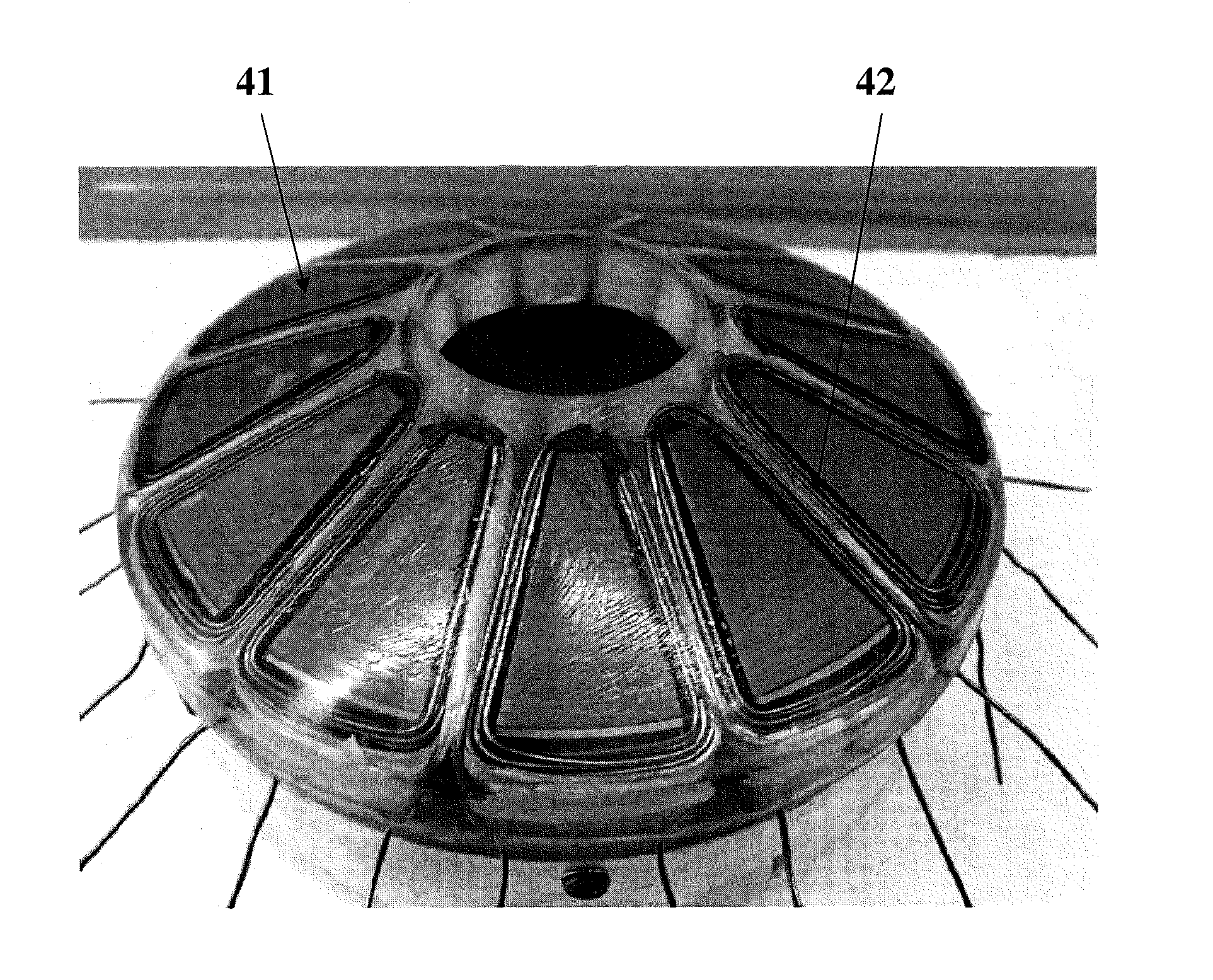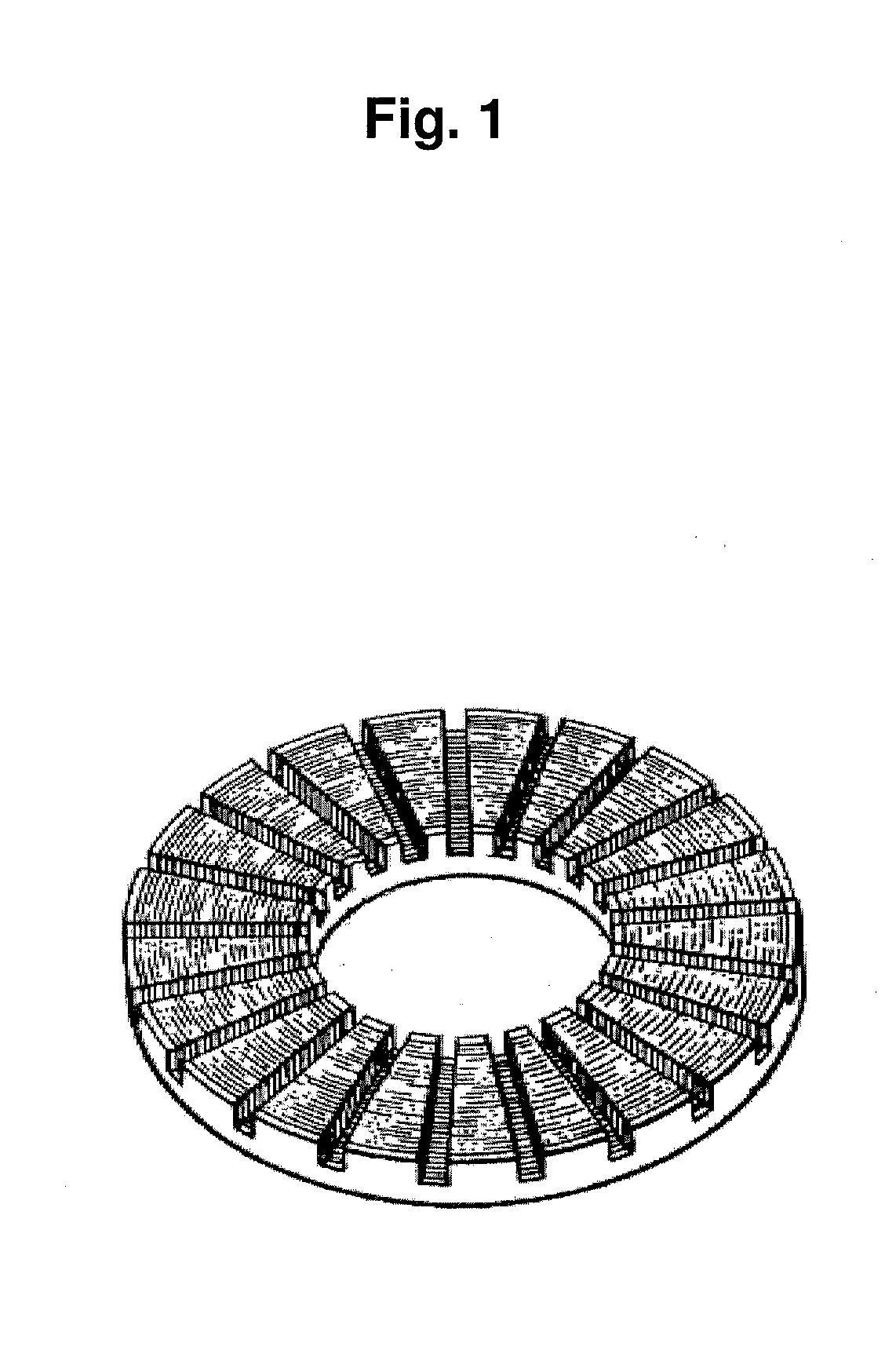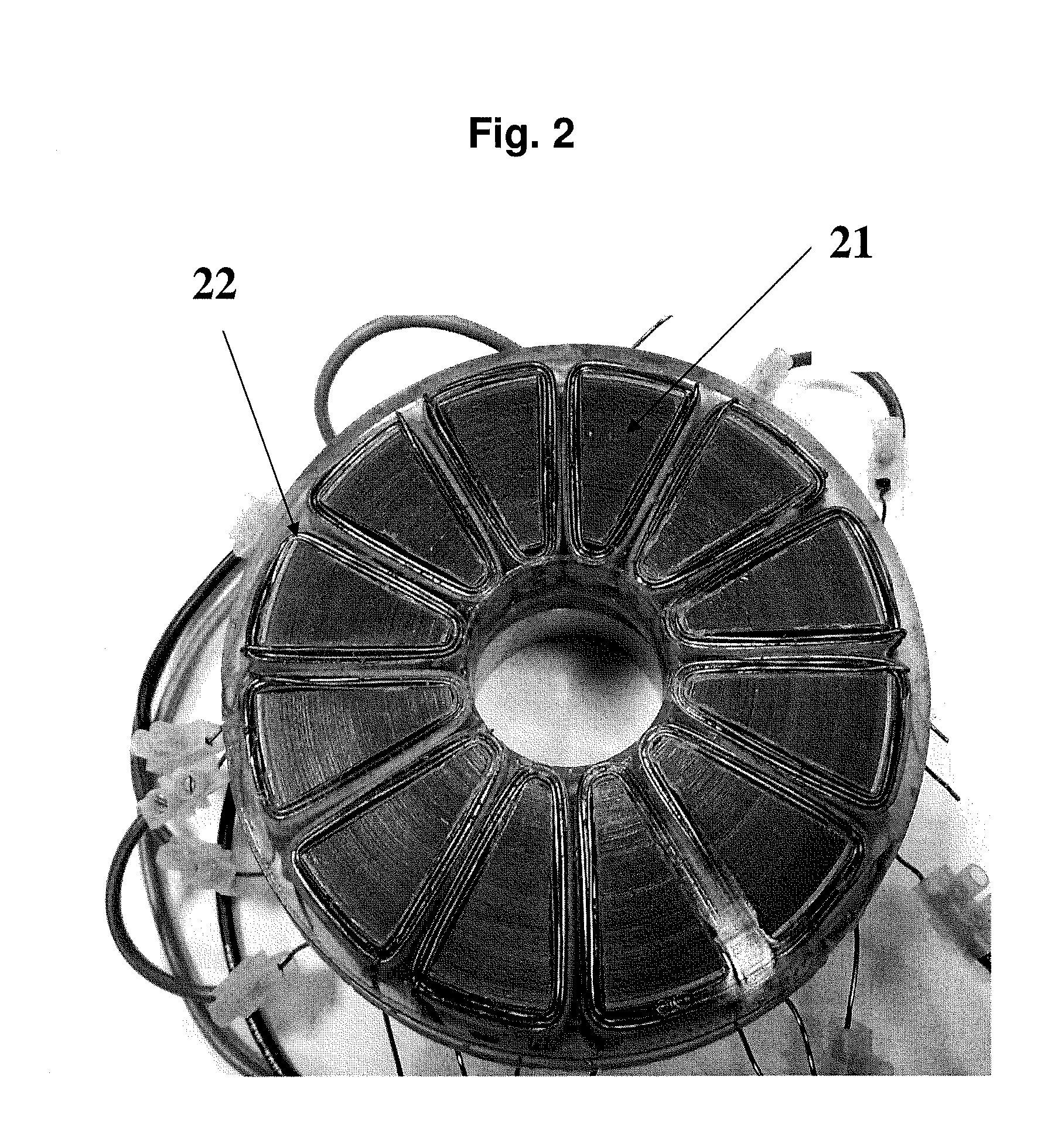Method of constructing core with tapered pole pieces and low-loss electrical rotating machine with said core
- Summary
- Abstract
- Description
- Claims
- Application Information
AI Technical Summary
Benefits of technology
Problems solved by technology
Method used
Image
Examples
example 1
[0042]A motor stator core of an embodiment of the present invention as depicted in FIG. 4 had an outside diameter D=110 mm, an inside diameter d=45 mm, a plurality of pole pieces each with an outside width of to=21 mm and an inside width of ti=38 mm, a plurality of slots each with a slot width s=8 mm, pi=30 mm, slot depth sd=12 mm and a pole piece surface having a taper angle φ=29 degrees. A stator core of conventional configuration as depicted in FIG. 2 had the same physical dimensions as those in FIG. 4, except that the taper angle φ=0.
[0043]The motors with stators of FIG. 2 and FIG. 4 were tested in accordance with a conventional dynamometer test method. FIG. 5 compares the output torque versus the motor speed given by curve 52 for a motor of an embodiment of the present invention and that for a conventional motor given by curve 51. From the two curves, 52 and 51, higher output torque was realized as the motor speed increased by adopting a stator core of that embodiment of the pr...
example 2
[0047]The following stator core sizes were different from those in Example 1, and were examined and evaluated. The dimension designations were the same as those in FIG. 3.
[0048]Core A: D=110 mm, d=45 mm, sd=17 mm, φ=25 degrees, and pi=30 mm. Core B: D=110 mm, d=45 mm, sd=12 mm, φ=25 degrees, and pi=30 mm. Core C: D=60 mm, d=40 mm, φ=20 degrees, and pi=30 mm. All of these stator cores had twelve (12) slots and ten (10) poles.
[0049]As shown in FIG. 9, stator Core A showed higher efficiency than stator Core B at all torque levels. Above 1 Nm of torque, Cores A and B reach efficiencies of 90% and 80%, respectively.
[0050]In FIG. 10, motor torque as a function of motor speed was compared among stator Cores A, B and C. These examples indicated that stator core configurations affected the overall motor efficiency. The general trend was: larger cores with higher degree of pole surface taper angle resulted in higher motor torque and efficiency for a given motor speed.
[0051]For example, for em...
PUM
| Property | Measurement | Unit |
|---|---|---|
| Efficiency | aaaaa | aaaaa |
| Efficiency | aaaaa | aaaaa |
| Efficiency | aaaaa | aaaaa |
Abstract
Description
Claims
Application Information
 Login to View More
Login to View More - R&D
- Intellectual Property
- Life Sciences
- Materials
- Tech Scout
- Unparalleled Data Quality
- Higher Quality Content
- 60% Fewer Hallucinations
Browse by: Latest US Patents, China's latest patents, Technical Efficacy Thesaurus, Application Domain, Technology Topic, Popular Technical Reports.
© 2025 PatSnap. All rights reserved.Legal|Privacy policy|Modern Slavery Act Transparency Statement|Sitemap|About US| Contact US: help@patsnap.com



